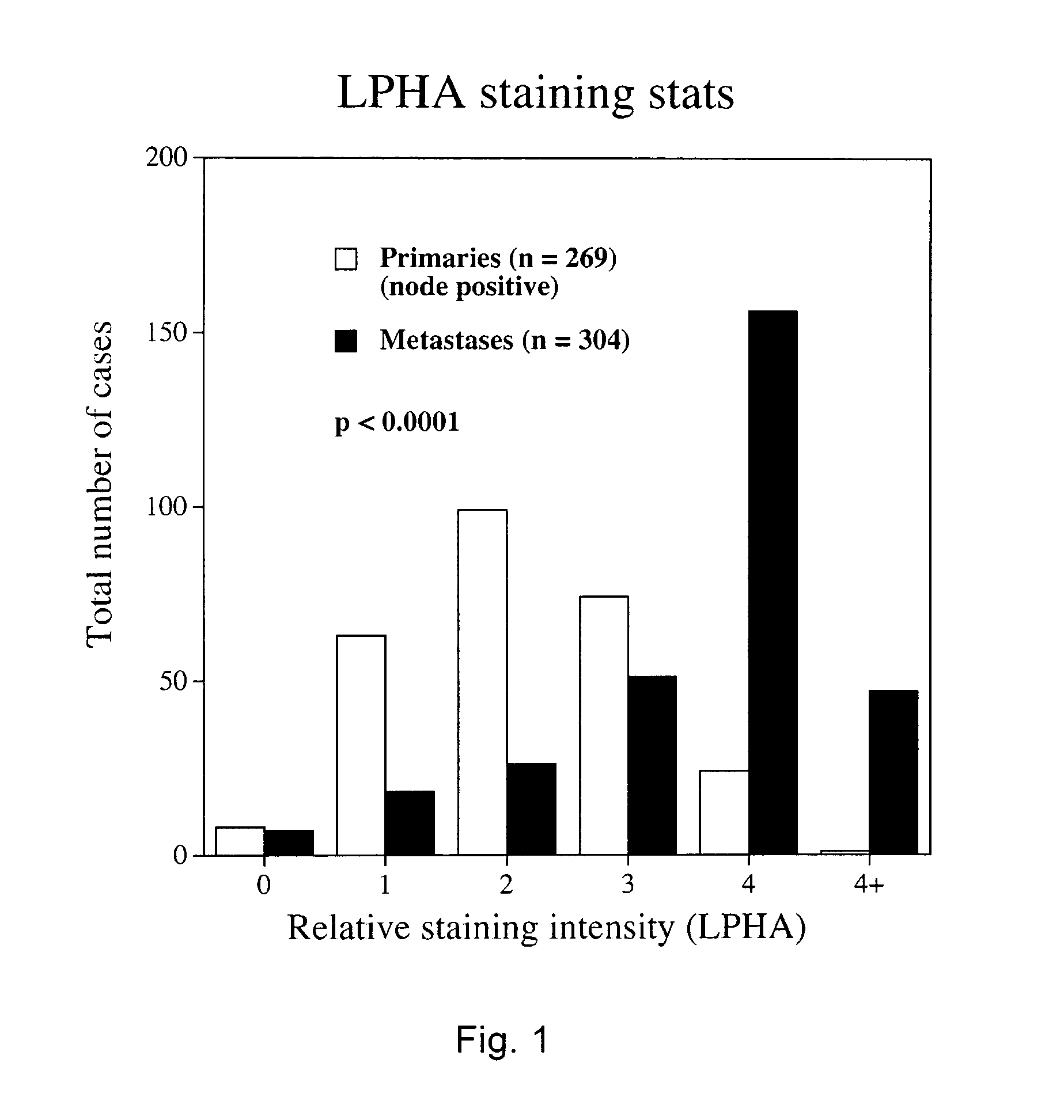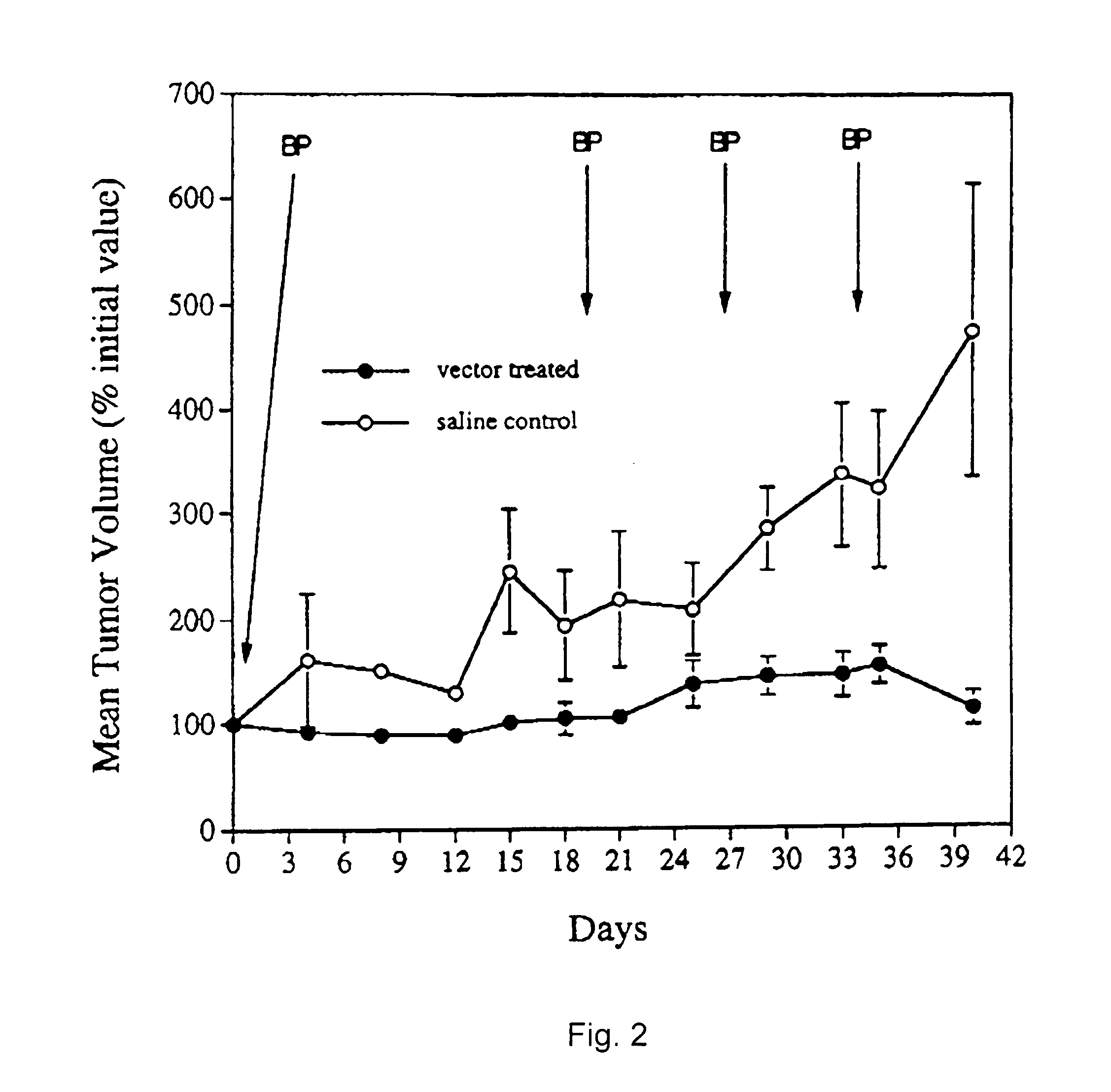Agents and methods for treatment of disease by oligosaccharide targeting agents
a technology of oligosaccharide and targeting agent, which is applied in the field of metastatic cell biology, can solve the problems of increased susceptibility to apoptosis, decreased substrate adhesion, and loss of contact inhibition, and achieves enhanced toxicity of bacteria, reduced side effects, and specific susceptibility.
- Summary
- Abstract
- Description
- Claims
- Application Information
AI Technical Summary
Benefits of technology
Problems solved by technology
Method used
Image
Examples
example 2
Bordetellae as metastasis-targeting vectors. The Bordetellae, including Bordetella pertussis, Bordetella parapertussis, and Bordetella bronchiseptica are closely related gram-negative bacterial subspecies that cause respiratory tract infections in humans and other mammals. For example, in its normal life cycle, Bordetella pertussis infects the human airways by attaching to specific oligosaccharides and proteins on respiratory tract cells, such as ciliated epithelia and macrophages (Tuomanen E. Subversion of leukocyte adhesion systems by respiratory pathogens. ASM News 59: 292-296, 1992.). This is accomplished through ‘adhesins’, bacterial proteins that attach to the mammalian cell surface oligosaccharides and proteins via high affinity (‘lock and key’) binding mechanisms (Saukkonen K, Burnette W N, Mar V L, Masure H R, Tuomanen E I. Pertussis toxin has eukaryotic-like carbohydrate recognition domains. Proc. Natl. Acad. Sci. USA 89:118-122, 1992.). These same, or highly similar, oli...
example 3
Discrimination between neoplastic and normal human cells by Bordetella pertussis. Human metastatic melanoma cells (Skmel-23 / C22) were compared side-by-side to normal human melanocytes and normal human fibroblasts as hosts for invasion of B. pertussis strain 536 (ATCC 10380). The bacteria invaded melanoma cells 20-30 times more than they invaded normal melanocytes and fibroblasts during the same 30 minute time period. Thus, B. pertussis is a tumor-specific vector, associated with its ability to discriminate between cancerous and normal cells, reducing potential unwanted side-effects to normal cells during therapy therewith. B. pertussis is further advantageous in diagnostic imaging due to its ability to discriminate between cancerous and normal cells, thus reducing background false signals from normal cells.
TABLE 1Comparative invasion of normal and neoplastic humancells in culture by B. pertussis strain 536.cfu / well ± S.D.Relative InvasionHuman cellsinvading bacteria (% of melanom...
example 4
Visualization of Fluorescence-Labelled B. Pertussis During Attachment and Invasion of Melanoma Cells.
Fluorescent-labelled (FITC) Bordetella pertussis can be seen through a fluorescent microscope attaching to, and / or invading Skmel-23 / C22 human metastatic melanoma cells in culture. Invasion procedures with polymixin B were as described above, only using FITC-labelled bacteria, and with extensive saline rinses prior to photography. Comparing the fluorescence field image with a fluorescent plus bright field optic photograph, reveals that the bacteria are within, or attached to the melanoma cells. These results provide proof of attachment to, and / or invasion of B. pertussis into human cancer cells.
Structural requirements on cancer cells for attachment and invasion of B. pertussis. Quantitative invasion assays were carried out with various additives to investigate structural requirements on human melanoma cells for attachment and invasion of B. pertussis. All additives listed in Tab...
PUM
| Property | Measurement | Unit |
|---|---|---|
| Fraction | aaaaa | aaaaa |
| Fraction | aaaaa | aaaaa |
| Fraction | aaaaa | aaaaa |
Abstract
Description
Claims
Application Information
 Login to View More
Login to View More - R&D
- Intellectual Property
- Life Sciences
- Materials
- Tech Scout
- Unparalleled Data Quality
- Higher Quality Content
- 60% Fewer Hallucinations
Browse by: Latest US Patents, China's latest patents, Technical Efficacy Thesaurus, Application Domain, Technology Topic, Popular Technical Reports.
© 2025 PatSnap. All rights reserved.Legal|Privacy policy|Modern Slavery Act Transparency Statement|Sitemap|About US| Contact US: help@patsnap.com


